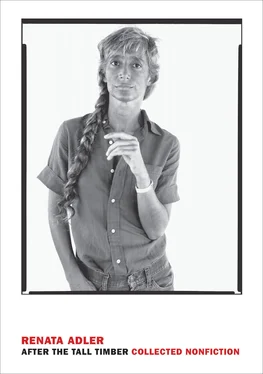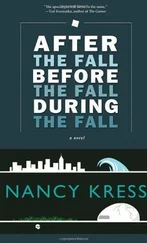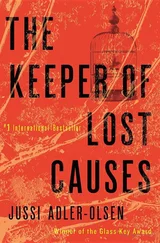In this instance, however, Robert Rivard, the editor of the San Antonio paper, had an exchange of emails with the editors of the Times — who said they would “look into the matter.” Rivard asked them to “acknowledge publicly” that the Times had wrongfully appropriated Ms. Hernandez’s work. Perhaps aware of how such an allegation would normally be treated, Mr. Rivard took the trouble of sending copies of his email to others. So the saga began publicly on April 30, 2003—when both the Associated Press and Howard Kurtz of the Washington Post ran the story. Had the Times not been “caught,” in this public way by rival publications, the paper would surely have done nothing and acknowledged nothing. In fact, it did nothing, until after the AP and Washington Post stories appeared. The next day, May 1, 2003, Jayson Blair resigned. On May 2, the Times reported his resignation, and added an Editors’ Note to the effect that the paper had begun “an internal review” of the piece in question, that it regretted the “breach of journalistic standards,” and that it planned an “apology” to the “family” that was the subject of the piece.
The apology, if any, seemed misdirected. If it was owed to anyone, one would have thought, it was to Ms. Hernandez, whose piece had been cribbed. The Anguiano family had been in no way harmed by Jayson Blair’s piece; they were not even aware that it existed. On April 28, 2003, two days after the Times ’s publication of the piece, the Department of Defense announced that Sgt. Anguiano was dead. On April 30 and May 1, however, the Times apparently found it necessary to phone his mother, to confirm in time for its report of May 2, that she “did not recall Mr. Blair’s having visited her home in Los Fresnos, Texas.” (“No, no, no, he didn’t come,” she said, according to the Times .) Everyone makes mistakes. Perhaps the reporter had called without reading the casualty lists released each day by the DOD. The Times account seemed an act of journalism run more seriously amok than anything contemplated by Jayson Blair. In any event, with the Times report, on May 2, 2003, of Mr. Blair’s resignation, and the reason for it, the matter should have rested. A minor reporter had made a mistake, and a miscalculation. Other reporters, more famous and highly regarded than Blair, had made mistakes with more serious consequences, not just for individuals but in matters of national importance. With one exception, the Times had paid no attention to the problems raised by any of them. (The exception was its coverage, in 1999 and 2000, of Wen Ho Lee.) The Times should simply have dropped, for its insignificance, the matter of Jayson Blair.
But no. On Sunday, May 11, with four pieces, beginning on Page One, and totaling approximately 15,000 words, the Times let loose. The first piece (7,165 words) was a narrative, which cast Jayson Blair as a sometimes charming, basically calculating villain, whose intent was not (as any reader of ordinary intelligence might have thought) to publish a lot of pieces and get ahead, but to deceive and victimize his too credulous, forgiving — and even understaffed — employer. The narrative, by five reporters (one a fine lawyer, Adam Liptak) and two research assistants, relied on “more than 150 interviews,” as well as expense accounts and phone records, to conclude that Jayson Blair, in 600 pieces written over a period of four years, had “flouted long-followed rules” at the Times in “a pathological pattern of misrepresentation, fabricating and deceiving.” By turns accusatory, sanctimonious, sympathetic, self-exonerating (“the deceit of one Times reporter does not impugn the work of 375 others”), the article quoted outsiders, deans of journalism schools for example, to support the Times ’s view of Blair’s career, its importance and his motives.
“There has never been a systematic effort to lie and cheat … comparable” to Blair’s, said one. “It is difficult to catch someone who is deliberately trying to deceive you ,” said another. Lying. Riddled with lies. Journalistic fraud. Systematic fraud. A cause of “pain” and “hurt.” This last was mystifying. Not one of Blair’s pieces, mostly soft, human-interest news of the sort which the Times has increasingly favored, seemed harmful either in intent or in effect — at least for their subjects. On the contrary. One couple whom Blair had interviewed by phone, the parents of a Marine scout then stationed in Iraq, were so “delighted” with his piece that they wrote a letter, which the Times published. Another, a wounded soldier whom Blair also interviewed by phone, was so taken with a sentence Blair ascribed to him that he apparently could not quite bring himself to relinquish it: “he could not be sure,” he told the Times , “whether he had uttered” the sentence — which the Times had, in fact, chosen, on April 19, 2003, as its “Quotation of the Day.” The story, like many of Blair’s stories — like many stories of far greater importance published routinely by the Times , among other newspapers — was largely false.
Stories published under deadline pressures, in an effort to cover the world on a daily basis, are bound to contain quantities of misinformation. The difficulty is to sustain, within the news itself, a continuous process of correction. (This is why the Times Corrections column, with its restriction to silly and often repetitive minutiae, creates a disingenuous impression of care for accuracy while it undercuts the fundamental integrity of the paper. A newspaper that insists on infallibility in large matters, while pointing out, as the Times does in correcting Jayson Blair, “The sister of Corporal Gardner is named Cara not Kara,” is a less trustworthy source of news than a paper without a Corrections column of any sort.) But the subjects of these pieces did not care. The normal reader did not care. In fact, not even the most fanatically press-obsessed reader could much care about the endlessly detailed re-reporting of what had been from the outset trivial stories.
The narrative piece did contain, near the end, one nearly perfect anecdote, the capstone of its accusations, in a claim that Mr. Blair had in fact been assigned to something important, “one of the biggest stories to come from the war.”
After the Hunt Valley article in late March, Mr. Blair pulled details out of thin air in his coverage of one of the biggest stories to come from the war, the capture and rescue of Pfc. Jessica D. Lynch…. Mr. Blair wrote that Private Lynch’s father, Gregory Lynch Sr., “choked up as he stood on his porch here overlooking the tobacco fields and cattle pastures.” The porch overlooks no such thing.
“Pulling details out of thin air,” the Times seemed to forget was, from the very first day, the essence precisely of the story of Pfc. Jessica D. Lynch — at every stage of the military’s coup in promoting through an obliging press a fiction, a highly implausible, unusually effective piece of propaganda, as “one of the biggest stories to come from the war.” The Times went straight to the heart of the matter. Huffy, in a wonderfully schoolmarmish way, “The porch overlooks no such thing” could be one of the great lines in press criticism, if not in journalism itself. Though “Correcting the Record” was the title of the narrative (7,165 words) — as it was of the next of the four Jayson Blair pieces — of May 2, 2003, the Times never disclosed what the porch does overlook.
The second piece, the “accounting” (6,591 words), divided each of several flawed articles by Blair into (capitalized) categories of flaw: DENIED REPORTS; FACTUAL ERRORS; WHEREABOUTS; PLAGIARISM; FABRICATIONS; and OTHER ISSUES. As an intellectual matter, it was clear that there was something wrong with this list. Readers who noticed that “WHEREABOUTS” did not, in any obvious way, belong in a list of transgressions had to realize that the “dateline”—the place the reporter claims to be filing his story from — had become, in this case, an obsession, a subject of limitless horror and indignation for the Times . The investigators may have been too scandalized to name it with precision. Readers, who have long been aware that most journalists, particularly famous journalists, do a lot of their interviews by phone, probably pay little attention to even the most exotic datelines. If Lally Weymouth of Newsweek is reporting on an exclusive interview with Pervez Musharraf of Pakistan, it is important that she has in fact spoken directly with him in Karachi. If John F. Burns, of the Times , is reporting on his treatment by agents in Baghdad, it is crucial that he is in fact there and not filing on the basis of a call from a bedside phone at the Plaza in New York. But these are distinguished reporters, and their actual location, at the time of reporting, is part of the essence of their work. A “dateline” in itself is meaningless.
Читать дальше






![Джеффри Арчер - The Short, the Long and the Tall [С иллюстрациями]](/books/388600/dzheffri-archer-the-short-the-long-and-the-tall-s-thumb.webp)





